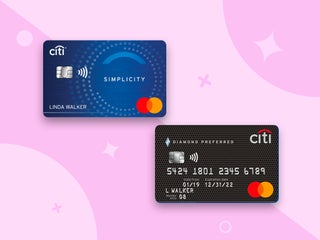Summary
The Chase trifecta is a powerful credit card combo, but the Citi trifecta still packs a punch at a comparatively low price. Which one should you choose?
The content on this page is accurate as of the posting date; however, some of our partner offers may have expired. Please review our list of best credit cards, or use our CardMatch™ tool to find cards matched to your needs.
When your goal is to maximize credit card rewards and get the most value you can, one card isn’t enough. Combining a few cards to match your spending and lifestyle can allow you to earn rewards in your most common spending categories and enjoy extra benefits.
One way to create a card combo is to stick to one credit card issuer and keep your rewards in one ecosystem.
The Chase trifecta is one of the most well-known card combos but you can find effective card trios from other issuers as well. For instance, with the launch of the Citi Custom Cash℠ Card, you can build up a Citi combo that can also offer plenty of value.
Read this comparison of the Chase trifecta and the Citi trifecta and find which one would work better for you.
How the Chase trifecta works
The most rewarding card combo in the Chase trifecta is the Chase Freedom Unlimited, Chase Freedom Flex℠ and the Chase Sapphire Reserve. It allows cardholders to use the no-annual fee Freedom cards to earn points on everyday spending and pool them with rewards from the Chase Sapphire Reserve to redeem for travel.
The Reserve is a premium card at a premium cost – $550 per year – but its role in the trio is providing luxury premium benefits and a 50% boost for travel redemptions through the Ultimate Rewards portal.
With the Chase Freedom Flex, you’ll earn 5% cash back on rotating bonus categories that you must activate each quarter (up to $1,500 per quarter), 5% cash back on travel purchased through Chase Ultimate Rewards, 3% cash back on dining at restaurants, including takeout and eligible delivery services, 3% cash back on drugstore purchases and 1% cash back on everything else.
The Chase Freedom Unlimited has almost all the same bonus categories, but instead of 5% back in rotating quarterly categories and 1% back on general purchases, you’ll earn 1.5% on all purchases outside of bonus categories. Since the bonus categories mainly repeat those of the Flex, the Unlimited will serve as a card that helps you make sure you’re getting more than 1% back on every purchase.
Note that even though these rewards rates are marketed as cash back, you’ll in fact earn Ultimate Rewards points.
The Chase Sapphire Reserve’s rewards are less attractive: You’ll only get 3 points per dollar on dining and general travel and 1 point per dollar on other purchases. Plus, earn 10 points per dollar on hotel and car rental purchases through Chase Ultimate Rewards and 5 points per dollar on air travel through Chase Ultimate Rewards (earn elevated rewards on all travel purchases immediately after earning $300 annual travel credit).
But in the Chase trifecta, this card isn’t for earning – it’s for redeeming and taking advantage of the perks.
Besides a 50% higher point value when you redeem them for travel in the Ultimate Rewards portal, the Reserve also offers:
- $300 annual travel credit (applies to most travel purchases)
- Priority Pass Select membership
- Up to $100 Global Entry/TSA PreCheck credit every four years
- No foreign transaction fees
- Complimentary access to more than 1,000 airport lounges
- Free Lyft Pink membership for one year (activate by 3/31/22)
- Free DashPass membership for one year (activate by 3/31/22)
As you can see, the Freedom cards provide abundant earning potential, while the Reserve ensures you get excellent value out of your rewards and travel in comfort.
Another thing to consider is Ultimate Rewards transfer partners. Transferring your points is often the best way to get the most out of them. We estimate the highest point value when transferring Ultimate Rewards points to be 2.36 cents per point – you can get it when you transfer to Singapore Airlines.
Chase’s list of transfer partners includes some desirable ones, such as United Mileage Plus, Southwest Airlines Rapid Rewards, Virgin Atlantic Flying Club and World of Hyatt.
How the Citi trifecta works
Previously, you could get a Citi trifecta that would work similarly to the Chase trifecta. Now, however, the premium card Citi Prestige® Card isn’t available for new applications and the trifecta looks different – and offers a different kind of value.
At the moment, the optimal version of the Citi trifecta consists of the Citi Custom Cash Card, the Citi® Double Cash Card and the Citi Premier® Card.
The Citi Custom Cash is the 5% cash back card of the trio. It earns 5% back in your top eligible spending category each billing cycle (on up to $500 in spending per billing cycle, then 1% back). Qualifying categories include restaurants, gas stations, grocery stores, select travel, select transit, eligible streaming services, drugstores, home improvement stores, fitness clubs and live entertainment. All other purchases earn 1% back.
While this card is marketed as a cash back card, you’ll earn rewards in the form of ThankYou points.
The Citi Double Cash is the Chase Freedom Unlimited of this combo. Its role is to ensure you get more than 1% back on all your spending. The Double Cash earns 1% back on all purchases, which gets matched as you pay off those purchases. Essentially, you’ll earn 2% back, as long as you make your payments.
The card earns cash back, but you can convert rewards to ThankYou points.
Both Citi Custom Cash and Double Cash charge no annual fees.
Finally, the Citi Premier is the travel card of the combo. It earns 3 points per dollar on airfare and hotels, as well as 3 points per dollar on restaurants, supermarkets and gas stations. All other purchases earn 1 point per dollar.
As you can see, this card will allow you to earn on both travel and everyday purchases. It doesn’t have premium benefits like the Chase Sapphire Reserve, but it’s also much cheaper at $95 per year.
Like with other credit card rewards, you may get the best value out of your ThankYou points by transferring them. With some of Citi’s transfer partners, you may get a higher than 1-cent-per-point value. Some of the most attractive transfer partners include Avianca LifeMiles, Etihad Guest and Virgin Atlantic Flying Club.
Note that in the Citi trifecta, only the Premier also offers an opportunity to transfer points to transfer partners. The Citi Double Cash and Custom Cash can only earn so-called “basic” points which you can’t transfer. But if you combine them with points from the Premier card, you have an option to transfer to any of the Citi ThankYou travel partners.
Which combo is right for you?
| Cards | Chase trifecta | Citi trifecta |
| Combined rewards |
|
|
| Combined perks |
|
|
| Combined annual fees | $550 | $95 |
As you can see from the table, the Chase trifecta provides excellent value as well as benefits. The Citi trifecta, on the other hand, is much more affordable. While its benefits are far less impressive, there’s plenty of earning potential, and the Premier’s annual fee is only $95 – compared with $550 for the Reserve.
At the same time, you could modify the Chase trifecta to resemble the Citi trifecta by swapping the Reserve to the Chase Sapphire Preferred Card. This way, you’ll get a nice 25% boost when redeeming for travel through Chase’s portal, but without the high annual fee; like the Citi Premier, the Chase Sapphire Preferred costs only $95 annually.
The card earns 5 points per dollar on travel purchased through Chase Ultimate Rewards, 3 points per dollar on dining and 2 points per dollar on other travel purchases but with the trifecta, you wouldn’t use the Reserve for much of your spending anyway, since the Freedom cards earn at better rates.
The Preferred also doesn’t offer luxury travel perks, but it comes with useful protections, including trip cancellation/interruption insurance, baggage delay insurance, lost luggage reimbursement and more.
Consider the transfer partners, too. Chase partners with several popular American airlines and hotel chains, while with Citi, you might need to do some work identifying and booking with alliance partners.
For example, you could transfer points to Avianca LifeMiles and book a flight with a Star Alliance carrier, like United or Lufthansa. Note: Citi doesn’t partner with any hotel chains.
Bottom line
The Citi trifecta is more affordable than the Chase trifecta as far as annual fees go. Chase may offer better redemption value and transfer options, however, as well as premium benefits. Additionally, you could swap the Reserve card for the Preferred to make your Chase trifecta as affordable.
Editorial Disclaimer
The editorial content on this page is based solely on the objective assessment of our writers and is not driven by advertising dollars. It has not been provided or commissioned by the credit card issuers. However, we may receive compensation when you click on links to products from our partners.





